There are a few staple meals most beginner cooks mess up and mine was rice.
When I first started cooking, I often wondered why my rice would come out so mushy so I naturally began searching for ways to fix it.
After doing some research, I found out that rice usually becomes soggy when there’s too much cooking liquid.
Since rice grains can absorb a certain amount of water, they start to split apart when there’s too much liquid.
When this happens, the excess liquid remains in the pot and makes rice watery.
However, I also found out a few other reasons that lead to the same outcome when they’re overlooked.
In this article, I’ll delve into them so you can prevent your rice from turning mushy ever again.
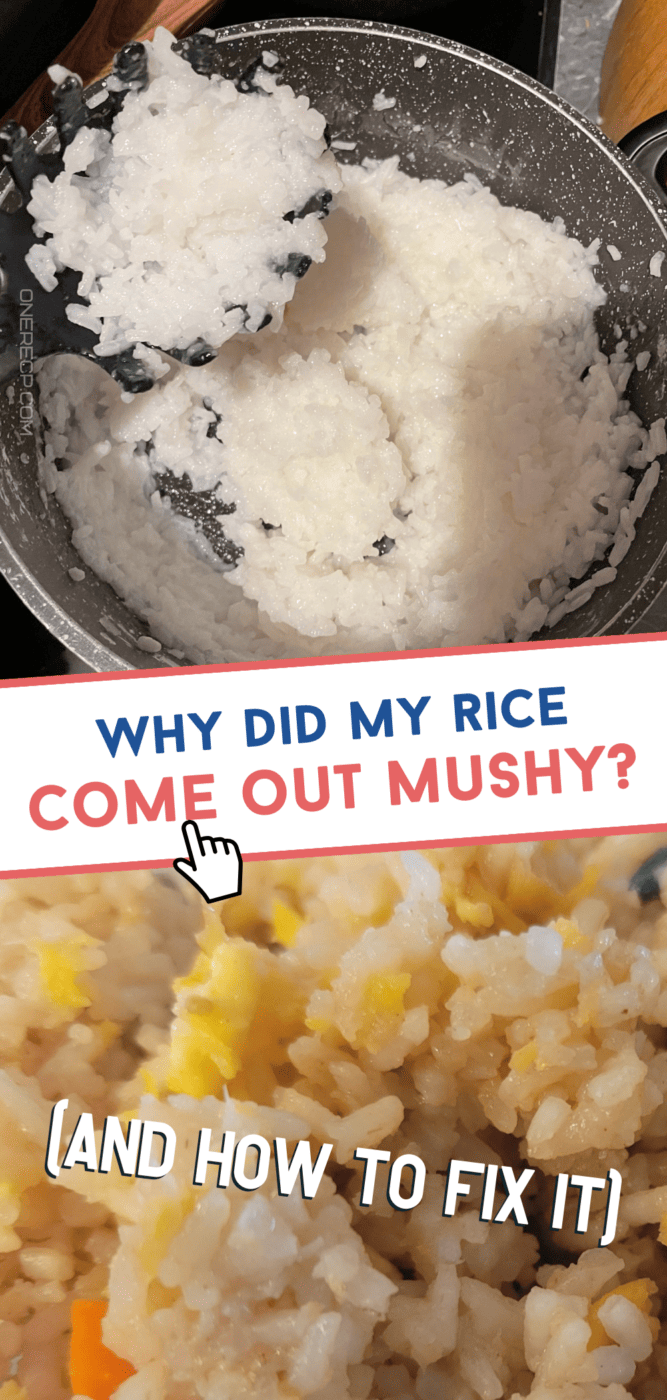
Why did my rice come out soggy?
Rice is supposed to be one of the easiest meals you can cook. All you need to make it is follow the package instructions and add the right amount of water.
And this is where most people mess up and end with a pot of mushy rice.
Most recipes and package instructions recommend using two cups of water for every cup of uncooked rice. These recommendations, however, don’t take into account the type of pot that’s used to cook the rice. Following them often leads to mushy rice since pots with tight lids and rice cookers have less evaporation.
In fact, all things being equal, all types of rice absorb water at a 1:1 ratio.
However, in practice, they require more water since some of it evaporates during cooking.
And the amount of water loss is primarily determined by the cooking vessel that you’re using.
Rice cookers, for instance, have a fairly tight lid so most of the recipes they come with call for 1 ½ cups of water per cup of rice.
Pressure cookers and instant pots require even less water.
So the conclusion is that if you’re using a rice cooker and your rice is not absorbing the water, you should ditch the package instructions and use less water.
Another mistake that can often lead to mushy rice is the lack of rest.
Many people tend to fluff their rice or serve it straight away without any rest time.
This creates an uneven texture since there’s too much water in the rice at the bottom of the pot.
When you let your rice rest, the steam from the bottom rises to the top and gets absorbed by the rice.
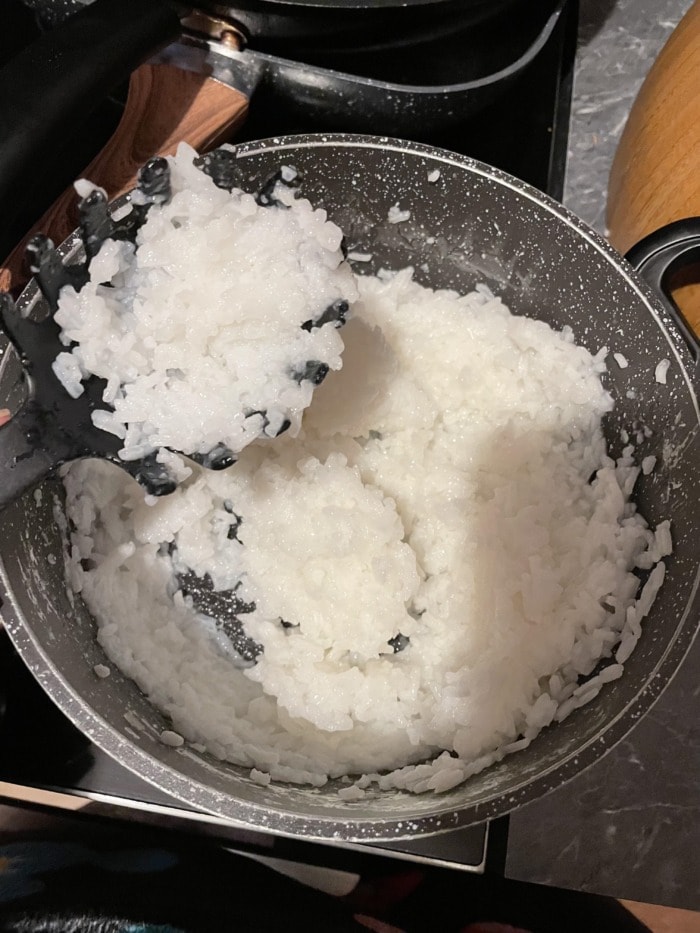
by mumtried
How to fix mushy rice?
Even if you end up with a pot of soggy rice, there are still a few ways to salvage it.
You can dry out the mushy rice in the oven, let the excess water evaporate or even use a few pieces of stale bread.
Let’s see how each of these methods work in detail.
Let the rice rest.
The easiest way to fix rice that’s slightly overcooked is by letting it rest for 15 to 20 minutes.
This allows the steam from the bottom of the rice to escape and get absorbed by the top layer.
To prevent condensation, put a clean towel on top of the pot and place the lid back on.
The towel will soak up the excess moisture and prevent your rice from becoming soggy.
Dry it in the oven.
Another way to save a batch of soggy rice is by drying it in the oven.
Start by straining the rice in a fine-mesh sieve or colander and washing it with cold water.
This will not only remove some of the excess liquid, but also prevent clumping.
After you’ve drained all of the excess water, spread the rice onto a baking sheet and bake for 5 minutes in an oven preheated to 350°F (177°C).
Cover the rice with a few pieces of stale bread.
Adding a few pieces of stale bread on top of mushy rice is a great way to soak up some of the moisture.
Before you do so, however, it’s good to drain some of the liquid using a colander or a fine-mesh sieve.
Afterwards, simply place the pieces of bread on top of the rice and set your stove top on low heat until the meal is no longer soggy.
How to prevent rice from becoming mushy?
Mushy rice is typically rice overcooked in too much water.
The first thing you can do to prevent your rice from becoming mushy is to use less water. Most varieties of white rice are cooked with a 1:2 rice to water ratio.
This, however, tends to make rice watery when it’s made in a rice cooker or a pot with a tight fitting lid.
Therefore, you could try to reduce the amount of water in your recipe by half a cup to prevent your rice from becoming mushy.
For aromatic varieties of rice and white rice this means using 1 1/2 cups of water per cup of rice, while for brown rice you’ll need about 2 1/2 cups of water since it requires more cooking time.
Another thing you could do to reduce the odds of watery rice is to cook it like pasta.
This method takes the amount of water out of the equation and is much easier to follow.
It also makes rice grains less sticky which is always a good thing in my book.
The way to cook rice like pasta is quite simple.
You start by bringing a large pot of water to a boil and seasoning it with salt.
After the water starts boiling, you add in the rice, and stir it occasionally.
White rice usually takes roughly 8 minutes to cook, while for brown rice you will need about 25 minutes.
Once the rice is done, you strain it in a colander and transfer it back to the stove.
You then add in some butter and cook for another 10 minutes on low heat which will dry the rice a bit and give it a finished look and texture.
How to repurpose overcooked rice?
Sometimes you can’t save overcooked rice, no matter what you do.
Fortunately, there are plenty of creative ways to repurpose it for other dishes.
Congee
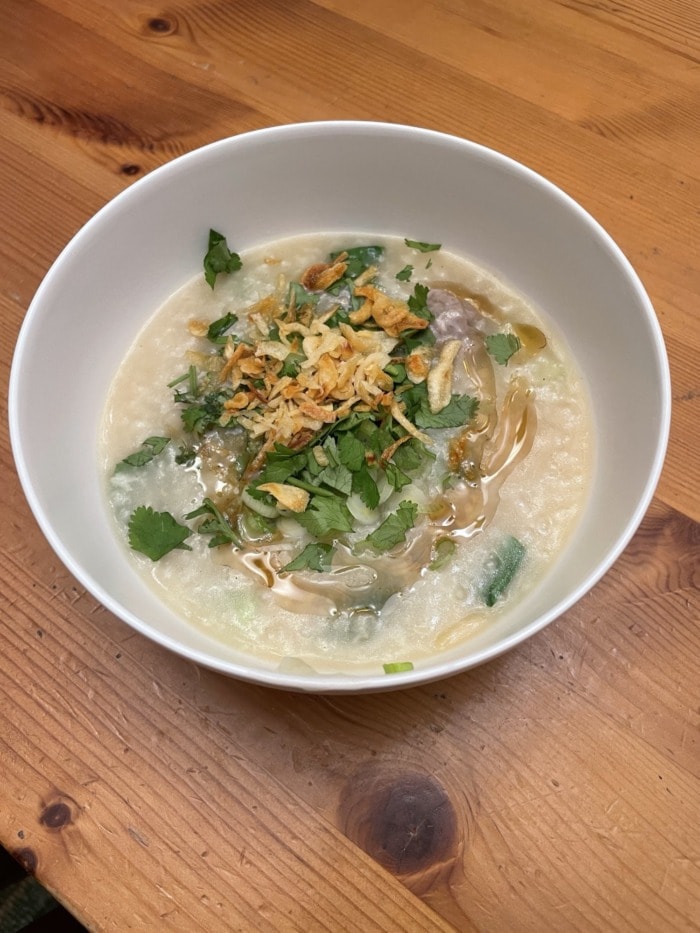
by princessprity
If your rice is too wet, you can easily turn it into congee.
Congee is a traditional Chinese rice porridge that can be made with both sweet and savory ingredients.
It’s typically prepared with soaked rice that gets cooked until all of the grains dissolve in the cooking liquid.
To make congee using mushy rice, you simply need to continue cooking the rice in a large pot with boiling stock or water.
You’ll need about eight cups of liquid for each cup of rice.
You then cook the rice until it emulsifies.
When I’m making congee, I also add some chicken to improve its flavor.
Since plain chicken is still somewhat boring, I season mine with galangal powder overnight, then boil it with scallions, ginger and Shaoxing wine.
If you’ve ditched alcohol from your recipes, you can check my list of non-alcoholic substitutes for Shaoxing wine here.
Rice crackers
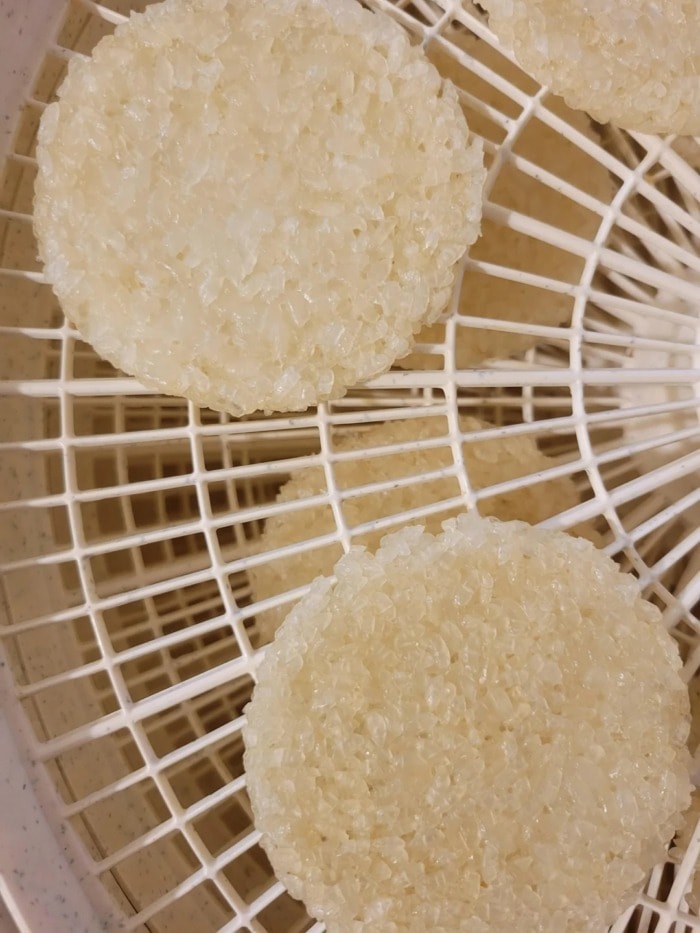
by UnthunkTheGlunk
You can also salvage soggy rice by using it for rice crackers.
To do so, you should first strain any of the excess liquid using a colander.
After the rice is strained, you should divide it into 100g portions (3.5 oz).
You then season each portion of rice with 2 tbsp sesames seeds, 1 tbsp minced scallions and 1/4 tsp salt.
Once it’s seasoned, you flatten the rice between two 8 inch pieces of parchment paper.
You can do this by using your hands or a rolling pin.
After the rice is flattened, you remove the parchment paper from the top and microwave for 3 minutes.
You then flip the rice cracker and microwave the other half for another 3 minutes.
Rice pudding
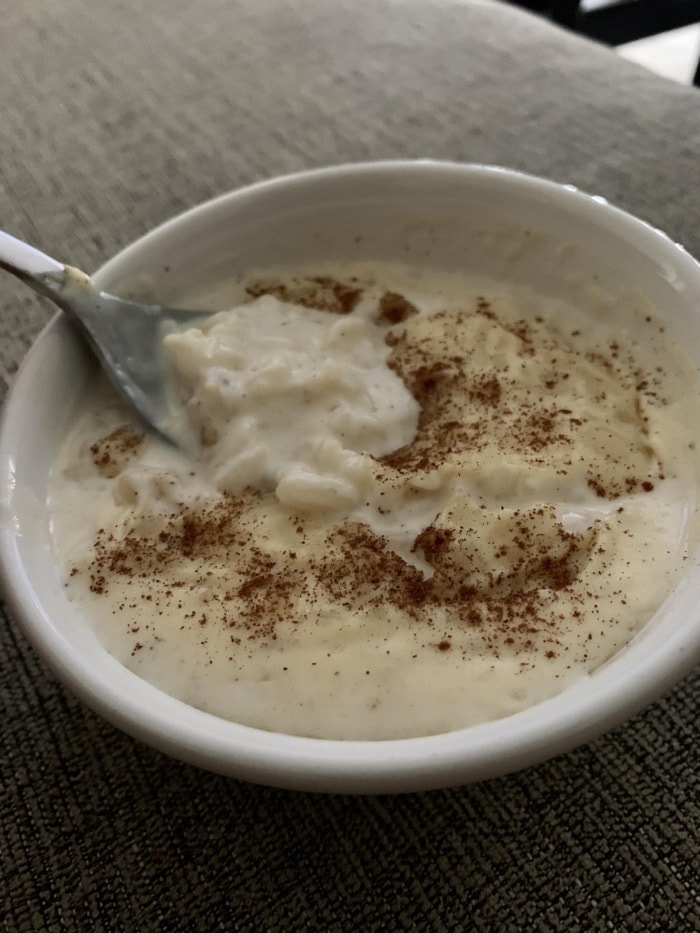
by Sleepy_Pudding
Another great way to repurpose overcooked rice is by turning it into a rice pudding.
Sure, you’ll need to figure out another meal for dinner, but at least you’ll have dessert.
Making rice pudding out of a batch of soggy rice is quite simple.
You start by adding two cups of milk for every cup of rice you have.
You then whisk the milk on low heat to deglaze the pot and release the thin layer of starch from the bottom.
After you deglaze the pot, you cook the rice until it becomes creamy which should take about 10 minutes.
Once done, you turn off the heat and add a pinch of cinnamon, vanilla extract and an egg yolk.
You follow this by vigorously whisking the egg yolk so it can fully incorporate into the rice.
You then garnish the rice pudding with raisins, transfer it into cups and chill it in the fridge
My final thoughts
In most cases, rice becomes mushy when there’s too much water.
Fortunately, you can easily adjust the amount of cooking liquid to avoid this and make your rice perfectly fluffy.
And even if you do find yourself with a pot of overcooked rice, you can easily repurpose it for other uses.
Don’t forget to leave a comment if you found this guide useful or you have any questions.